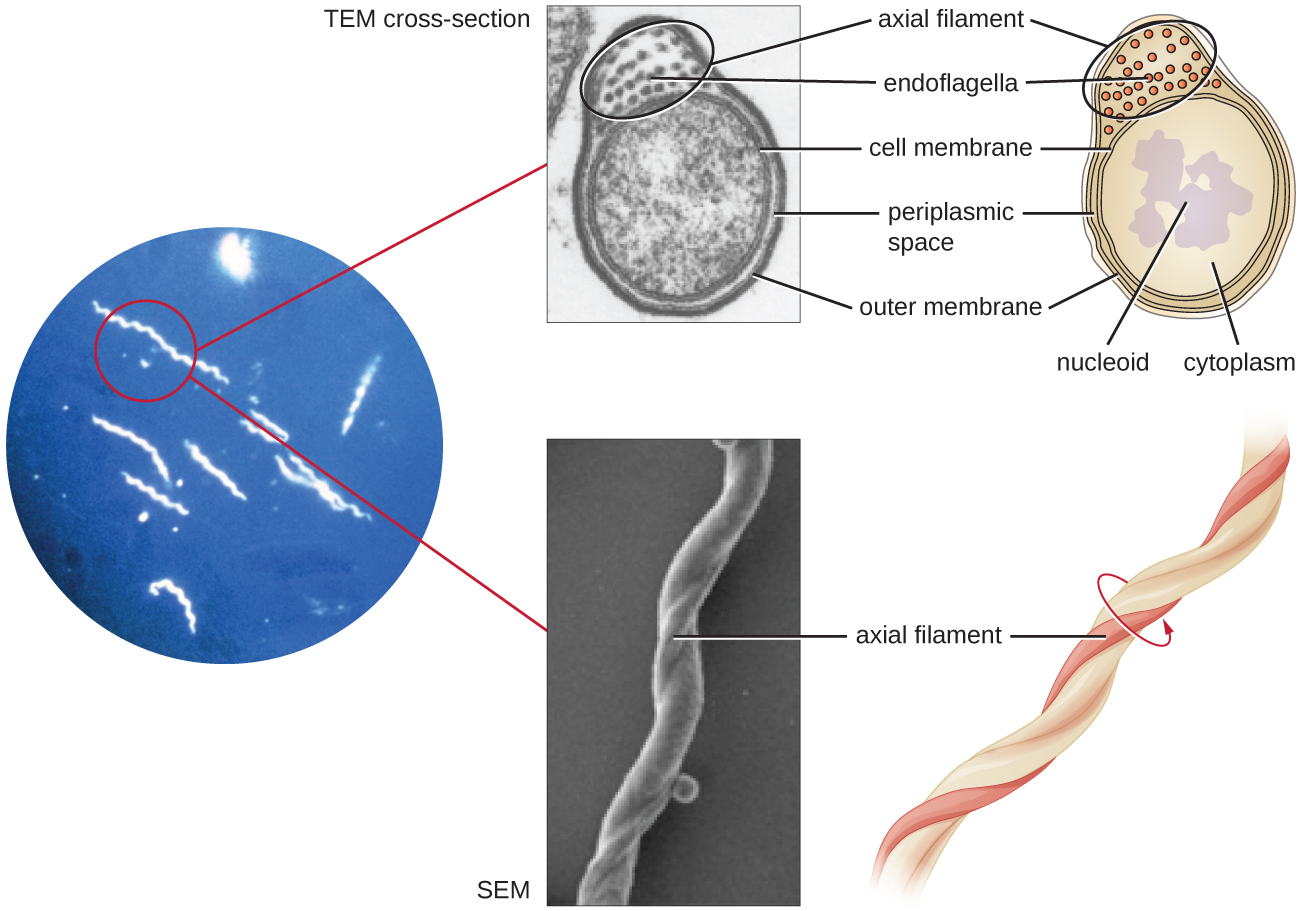| << Chapter < Page | Chapter >> Page > |
The majority of the gram-negative bacteria belong to the phylum Proteobacteria, discussed in the previous section. Those that do not are called the nonproteobacteria . In this section, we will describe three classes of gram-negative nonproteobacteria: the spirochetes, the CFB group , and the Planctomycetes . A diverse group of phototrophic bacteria that includes Proteobacteria and nonproteobacteria will be discussed at the end of this section.
Spirochetes are characterized by their long (up to 250 μm), spiral-shaped bodies. Most spirochetes are also very thin, which makes it difficult to examine gram-stained preparations under a conventional brightfield microscope. Darkfield fluorescent microscopy is typically used instead. Spirochetes are also difficult or even impossible to culture. They are highly motile, using their axial filament to propel themselves. The axial filament is similar to a flagellum, but it wraps around the cell and runs inside the cell body of a spirochete in the periplasmic space between the outer membrane and the plasma membrane ( [link] ).

Several genera of spirochetes include human pathogens. For example, the genus Treponema includes a species T. pallidum , which is further classified into four subspecies: T. pallidum pallidum , T. pallidum pertenue, T. pallidum carateum, and T. pallidum endemicum . The subspecies T. pallidum pallidum causes the sexually transmitted infection known as syphilis , the third most prevalent sexually transmitted bacterial infection in the United States, after chlamydia and gonorrhea. The other subspecies of T. pallidum cause tropical infectious diseases of the skin, bones, and joints.
Another genus of spirochete, Borrelia , contains a number of pathogenic species. B. burgdorferi causes Lyme disease , which is transmitted by several genera of ticks (notably Ixodes and Amblyomma ) and often produces a “bull’s eye” rash, fever, fatigue, and, sometimes, debilitating arthritis. B. recurrens causes a condition known as relapsing fever. Appendix D lists the genera, species, and related diseases for spirochetes.
The gram-negative nonproteobacteria of the genera Cytophaga , Fusobacterium , and Bacteroides are classified together as a phylum and called the CFB group . Although they are phylogenetically diverse, bacteria of the CFB group share some similarities in the sequence of nucleotides in their DNA. They are rod-shaped bacteria adapted to anaerobic environments, such as the tissue of the gums, gut, and rumen of ruminating animals. CFB bacteria are avid fermenters, able to process cellulose in rumen, thus enabling ruminant animals to obtain carbon and energy from grazing.

Notification Switch
Would you like to follow the 'Microbiology' conversation and receive update notifications?